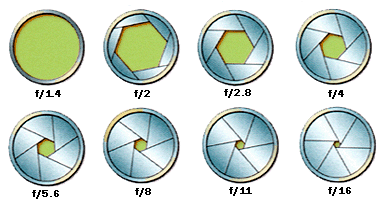Return
Home
Return to
Main
How-To
Page

Photo Books
On Sale!
If you would like to
make a donation to
help fund this site,
click below!
|
Understanding the Concept of Exposure

Light
& Exposure
The very definition of the translated Greek word "photography"
means "drawing with light." Whether it is portraits, landscapes,
architecture or just snapshots of the kids, the exposure required
to capture a clear picture will depend on the light reflecting from
the scene, and the overall brightness of the subject. Most of the
time, the amount of available light is out of your control. But, as
the photographer, you do determine how much of that light passes
through the lens of your camera -- and for how long. There are always
three factors involved in making your decision:
Film Speed
An ISO (International Standards Organization) number denotes the sensitivity
of a particular film to light. Most people call it the film speed.
The higher the number, the more sensitive the film. An ISO 25 film
requires considerably more light to form a correct exposure than an
ISO 1600 film (64 times more, to be precise).
Shutter Speed
The shutter speed controls the amount of time the camera curtains
(or the overlapping metal leaves in some lenses) remain open. Common
shutter speeds include: 1 second, 1/2, 1/4, 1/8, 1/15, 1/30, 1/60,
1/125, 1/250, 1/500 and 1/1000 of a second. Obviously, the longer
the shutter speed, the more light will reach the film at any given
aperture.
Aperture
The aperture is the size of the opening in the diaphragm mechanism
of the lens (see the illustration above). The larger the aperture,
the more light there will be to expose the film during any given time
(shutter speed). The aperture settings on most lenses (called f-stops),
run in a series from the largest to smallest opening: f/1.4, f/2,
f/2.8, f/4, f/5.6, f/8, f/11, f/16 and f/22 are the most common. The
higher the f-stop number, the smaller the lens opening. Each f-stop
click is doubling (or cutting in half, depending on which way you're
going) the amount of light entering the lens. For instance, open up
one complete f-stop from f/8 to f/5.6 and the aperture opening area
is twice as large, and will allow double the amount of light to pass.
Stop down one f-stop, from f/2.8 to f/4, and you have cut in half
the amount of light that will reach the film while the picture is
being made.
There are numerous different - but equivalent - combinations of shutter
speed and f-stop that will produce the same total exposure. This is
the concept called reciprocity.
However, how you use the available combinations will affect the images
you capture in other ways, either in your ability to "stop" motion,
or in an equally noticeable effect, called depth of field.
It is by no means complete, but the items I am working on so far are
listed below (note: the line items in blue are live page links; those
items in black are still under construction):
If you would like a specific repair or instructional
item to be considered on this site, simply go to
my Mamiya 35mm Camera
Forum and make your suggestion known. However, please don't hold your
breath waiting, because it is likely to be a while before I can get
around to documenting all the things that might need fixing, and I
would hate to be responsible for even small portions of the population
turning purple! No liability for damage is either expressed or implied
in the use of these notations. |
| © 2000-2010 R.L.
Herron All Rights Reserved. Legal
|
| |
|
